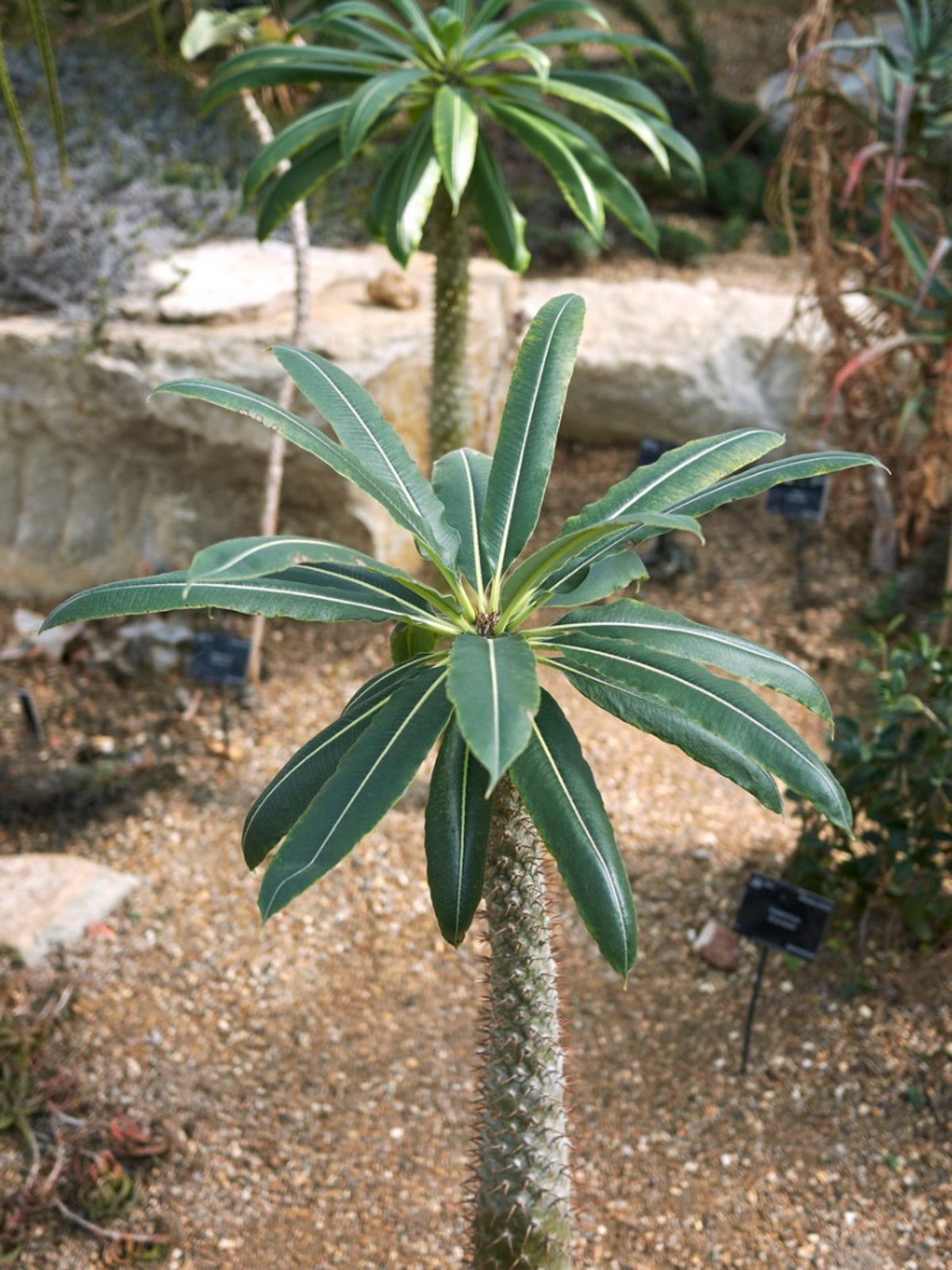Madagascar Palm Care: How To Grow Madagascar Palm Indoors

Native to southern Madagascar, the Madagascar palm (Pachypodium lamerei) is a member of the succulent and cactus family. Even though this plant has the name “palm”, it is not actually a palm tree at all. Madagascar palms are grown in warmer regions as outdoor landscape plants and in cooler areas as attractive houseplants. Let's learn more about growing a Madagascar palm indoors. Madagascar palms are engaging looking plants that will grow from 4 to 6 feet (1 to 2 m.) indoors and up to 15 feet (4.5 m.) outdoors. A long, spindly trunk is covered with exceptionally thick spines and leaves form at the top of the trunk. This plant very rarely, if ever, develops branches. Aromatic yellow, pink, or red flowers develop in the winter. Madagascar palm plants are an excellent addition to any sun-filled room.
How to Grow Madagascar Palm Indoors
Madagascar palms are not difficult to grow as houseplants as long as they receive enough light and are planted in well-draining soil. Be sure to place the plant in a container with drainage holes to avoid root rot. Growing a Madagascar palm plant from seeds is sometimes possible. The seeds should be soaked for at least 24 hours in warm water before planted. The Madagascar palm can be extremely slow to sprout, so it is essential that you be patient. It may take anywhere from three weeks to six months to see a sprout. It is easier to propagate this plant by breaking off a piece of growing shoots above the base and allowing them to dry for a week. After they are dry, the shoots can be planted in a soil mix that drains well.
Madagascar Palm Care
Madagascar palms require bright light and fairly warm temperatures. Give the plant water when the surface soil is dry. Like many other plants, you can water less in the winter. Water just enough to keep the soil from drying out. Use a diluted houseplant fertilizer at the beginning of spring and the beginning of summer. If Madagascar palms are happy and healthy, they will grow about 12 inches (30.5 cm.) a year and bloom profusely. If your palm shows signs of disease or pest infestation, remove the damaged parts. Most palms go dormant during the winter, so do not be surprised if some leaves fall or the plant does not look particularly happy. Growth will start up again in the spring.
Sign up for the Gardening Know How newsletter today and receive a free copy of our e-book "How to Grow Delicious Tomatoes".